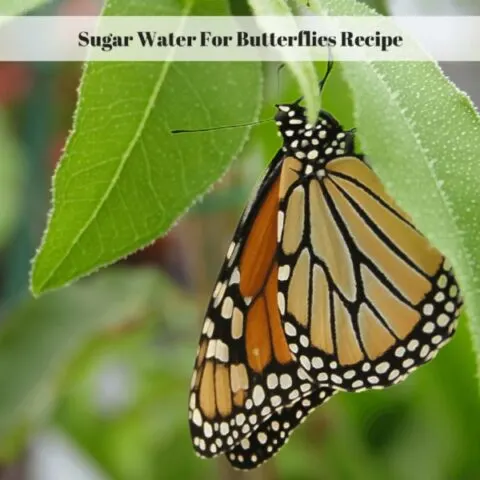Planting a wildflower garden is like painting a masterpiece with Mother Nature's palette.
It's an enchanting journey that infuses vibrancy and vitality into your surroundings.
I've found that each bloom tells a story, a tale of resilience and beauty that's unique to its species.
By selecting native wildflower seeds, you're not just cultivating a garden; you're fostering a connection to the land and its indigenous plants.
Preparing the soil is akin to laying down a fertile canvas, ready to embrace the seeds and nurture their growth.
It's about creating the perfect environment where these wild wonders can thrive.
And then, with careful hands and hopeful hearts, you sow the seeds, watching as nature works its magic.
This guide is like a roadmap, guiding you through each step with gentle encouragement.
It's a companion on your journey to create a haven for pollinators and a sanctuary for the soul in your own backyard.
Choosing Suitable Wildflower Seeds
Choosing wildflower species that sync with your region can mean the difference between a thriving mini wilderness and a good attempt gone awry.
Putting thought into your selection can help preserve the ecological balance and optimize the overall health of your garden.
Choosing the perfect wildflower seeds for your region is essential for a successful garden.
Here are some steps to help you select the right seeds:
- Research Native Species: Look for wildflowers native to your region. These plants are adapted to the local climate, soil conditions, and wildlife, making them more likely to thrive in your garden.
- Consider Climate and Soil: Take note of your region's climate and soil type. Some wildflowers prefer dry, sandy soil, while others thrive in moist, clay soil. Choose seeds that are suited to your specific growing conditions.
- Check Hardiness Zones: Consult the USDA Plant Hardiness Zone map to determine which plants are best suited to your area. Select seeds that are recommended for your zone to increase the likelihood of success.
- Look for Local Suppliers: Purchase seeds from local nurseries or reputable online suppliers that specialize in native plants. They will have a selection of seeds that are well-suited to your region and may offer valuable advice on planting and care.
- Read Seed Packets: Pay close attention to the information on seed packets. This will tell you when and where to plant the seeds, how deep to sow them, and any special requirements for germination and growth.
- Consider Wildlife Benefits: Choose wildflowers that provide food and habitat for local wildlife, such as bees, butterflies, and birds. This will not only enhance the biodiversity of your garden but also contribute to the health of the ecosystem.
By following these steps and selecting the right wildflower seeds for your region, you can create a beautiful and sustainable garden that thrives year after year.
Popular Wildflowers By Region
Here are some popular wildflowers by region.
- Aster amellus - To start off, let’s delve into the charm of Aster amellus, a treasure trove for hobbyist gardeners and pollinating insects. For anyone in a northern climate, this European michaelmas daisy is ideal. Aster amellus contends well against chilly winters and still manages to blossom into a stunning array of purple flowers. It’s super-resistant and low maintenance, promptly earning its spot as a favored choice
- Cosmos bipinnatus - In warmer, drier climates however, consider venturing into the world of Cosmos, specifically Cosmos bipinnatus. As free-blooming annuals, they exude a joyful medley of white, pink, and crimson shades. Furthermore, their preference for basking in full sun makes them a match made in heaven for climates that receive plenty of sunshine throughout the year.
- Aquilegia species - For gardeners located in mountainous regions, exploring the Columbine (Aquilegia sp.) is rewarding. These perennials are tailored for colder regions, boasting high altitude resilience. Their unique spurred petals are undeniably enchanting, offering a delightful spectrum from soft mauves to blazing reds.
- Eryngium - Folks dwelling in coastal areas might find the Sea Holly (Eryngium) to be an interesting addition to their garden. Glowing with an alien beauty, these perennials feature unique thistle-like flowers in a silver-blue hue. Noted for their salt-tolerance, they can endure coastal winds and salty air, proving to be both resilient and radiant.
- Helianthus maximiliani - Then there's the midwestern states that calls for sunflowers, especially the Maximilian Sunflower (Helianthus maximiliani). These perennials are perfect for attracting birds and butterflies, showcasing tall, stiff stems covered in bountiful golden-yellow flowers. Not only are they robust and resistant to various environments, they also hold a legacy of being native to the prairies of central North America
- Digitalis purpurea - Let's not forget, in rain abundant regions, the Pacific Northwest, for example, Foxglove (Digitalis purpurea) flourishes. They’re tall, conspicuous, and absolutely mesmerizing with tube-like flowers that stretch outwards. Bumblebees simply adore them! Remember though, while utterly enchanting, Foxgloves are toxic; a point to note especially for gardens accessible by children or pets.
Unveiling Nature's Canvas: The Importance of Choosing the Right Wildflowers
Identifying the right wildflowers is quintessential to fostering a riveting display of nature's art in your garden.
Many people choose native wildflowers, while others choose a mix of annual and perennial flowers.
Just keep in mind, every bloom carries a narrative, forming lovely connections with other organisms, crafting a garden uniquely tailored to your region.
Getting the Soil Ready for Wildflower Planting: A Step-by-Step Guide
Are you ready to start planting a wildflower garden?
Cultivating a wildflower garden not only adds a riot of color and an enchanting sense of wildness to your landscape but also creates a haven for all sorts of delightful creatures.
However, before you start planting, it is essential to prepare the soil.
Don't worry, you've come to the right place to learn!
- Understand Your Soil: Assess the soil composition in your chosen area. Wildflowers thrive in various soil types, so knowing what you're working with is crucial. Conduct a soil test to determine pH levels and nutrient content.
- Remove Existing Growth: Clear the area of any existing grass or weeds. This step ensures a clean slate for your wildflowers to establish themselves without competition.
- Prepare the Ground: Use a shovel or rototiller to break up compacted soil to a depth of six to ten inches. Remove rocks and roots, then rake the area smooth.
- Enhance Soil Quality: Depending on your soil type, amend it accordingly. Sandy soil benefits from organic matter like compost, while heavy clay soil may need sand or organic matter for improved drainage.
- Introduce Mycorrhizal Fungi: Scatter mycorrhizal fungi on the soil surface to enhance nutrient uptake by the wildflower roots. This beneficial fungus fosters healthy growth and resilience.
- Water Thoroughly: Water the area deeply a day or two before planting. This allows the soil to absorb moisture and settle, providing an optimal environment for seedling growth.
With the soil primed and ready, your wildflower garden is poised for success.
Get ready to witness a symphony of colors and scents, attracting an array of delightful visitors to your outdoor oasis.
Enjoy the journey as your wildflower haven comes to life!
Planting and Maintaining the Garden
Gardening enthusiasts know just how crucial the actual seed planting process is for a thriving garden.
Don't worry; it's not as complex as it may seem.
Let's delve into the best practices.
Timing Matters
When it comes to planting seeds, remember that timing is vital.
Keep an eye on the specific instructions on the seed packet since different species have diverse requirements.
Some seeds need to be started indoors weeks before the last frost, while others prefer being directly sowed into the garden.
Yet, typically, early spring is an ideal period for planting most wildflower species.
Scatter and Cover
First, scatter the seeds over the prepared soil, aiming for an even spread to avoid overcrowding.
If your chosen species needs light for germination (like the dainty Baby's Breath or striking California Poppy), leave the seeds on the surface.
For others that require darkness (such as the fragrant Evening Primrose or delicate Sweet Alyssum), lightly cover them with a thin layer of compost or mulch.
Keep Soil Moist
After seeding, consistently moisten the soil using a fine spray.
Avoid using a heavy water flow as this can displace seeds.
In the first few weeks of growth, delicate seedlings need consistently moist, but not soggy, soil.
Adjust Watering
Once your seedlings are established and spring rains lessen, begin to reduce watering.
Wildflowers are adapted to nature's watering schedule and typically fare better with less frequent, deep watering sessions.
This practice encourages roots to grow deeper into the soil, fostering strong, drought-resistant plants that can withstand the summer heat.
Maintenance and Care
Moreover, gardening is not a set-and-forget hobby, even when dealing with resilient wildflowers.
Regularly free your garden from invasive weeds that compete with your flowers for light, water, and nutrients.
However, once established, your wildflower bed can out-compete many common weed species.
Most wildflowers don’t require fertilizer and can grow in relatively poor soil.
However, for those that do, consider using an organic, slow-release fertilizer.
This helps ensure plants receive a steady supply of nutrients throughout the growing season.
Patience is Key
One last piece of advice: Trust in the process.
Cultivating a wildflower garden takes patience.
But when your flowers bloom and your backyard becomes a buzzing, fluttering wildlife habitat, you'll understand why hobbyist gardeners find this pastime so rewarding.
Embracing Nature's Bounty: Cultivating a Pollinator and Wildlife Haven
Creating a wildflower garden does more than add an attractive area to your outdoor space; it offers an opportunity to contribute to your local ecosystem by supporting native flora, pollinators and the diverse wildlife that depend on them.
By understanding how to choose the right wildflower seeds, prepare the soil appropriately, and tending diligently to your garden, you're not only cultivating a garden but preserving a tiny yet critical part of the natural world.
I hope this guide empowers you to transform your patch of land into a vibrant, blossoming haven for wildflowers.
Support Wildlife In Your Garden
How to Plant Milkweed: A Comprehensive Guide
Discover a world of milkweed gardening: Sow Right Seeds, Burpee, Lowe's, and Amazon—your complete guide awaits!
Cultivating Biodiversity In Your Garden: Plants That Give Back
Discover the art of cultivating biodiversity in your garden with our expert tips on choosing plants that enrich your ecosystem.
Support Wildlife In Your Garden
It's easy to support wildlife in your garden by providing them with the basics they need such as shelter, food and water.








